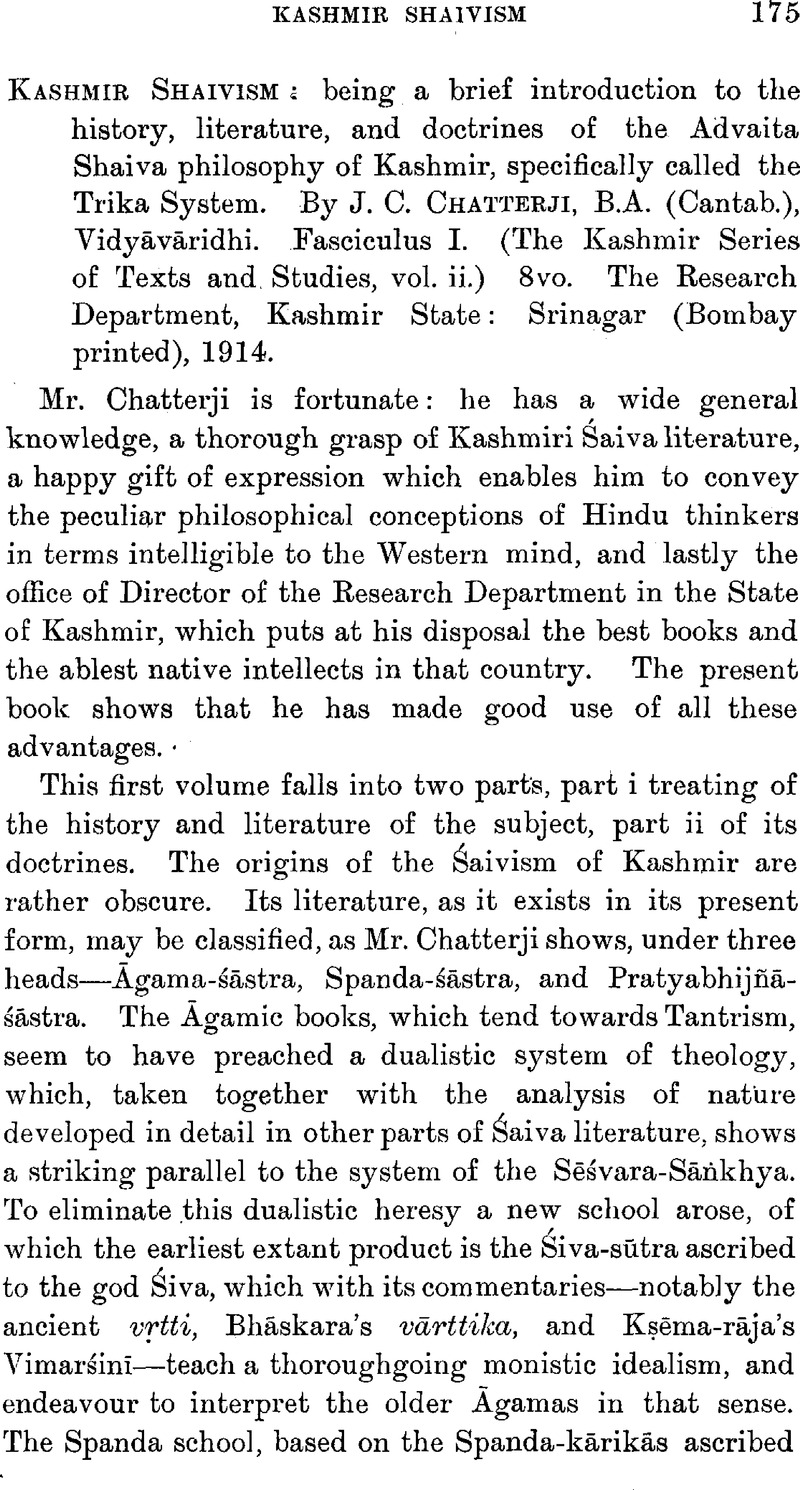Article contents
Kashmir Shaivism: being a brief introduction to the history, literature, and doctrines of the Advaita Shaiva philosophy of Kashmir, specifically called the Trika System. By J. C. Chatterji, B.A. (Cantab.), Vidyāvāridhi. Fasciculus I. (The Kashmir Series of Texts and Studies, vol. ii.) 8vo. The Research Department, Kashmir State: Srinagar (Bombay printed), 1914.
Review products
Published online by Cambridge University Press: 15 March 2011
Abstract

- Type
- Notices of Books
- Information
- Copyright
- Copyright © The Royal Asiatic Society 1915
References
1 The Sarva-daráana-saṅgraha applies this term not only to the doctrines here mentioned, but also to the schools based on the Śiva-sūtra and Spanda-kārikās.
2 I take this opportunity to acknowledge with gratitude Mr. Chatterji's correction on p. 11 of my mistake in JRAS. 1910, p. 719.Google Scholar But I regret to say that I am still not convinced that Abhinava-gupta's Paramārthasāra is based upon the Vaishṇava tract of that name, and that the latter is really the ancient Ādhāra-kārikās. The whole is greater than its part: if, as Abhinava-gupta asserts, his P. is an epitome of the Ādhārakārikās, it must have been shorter than the latter; but it is actually longer than the Vaishṇava P.
- 1
- Cited by


